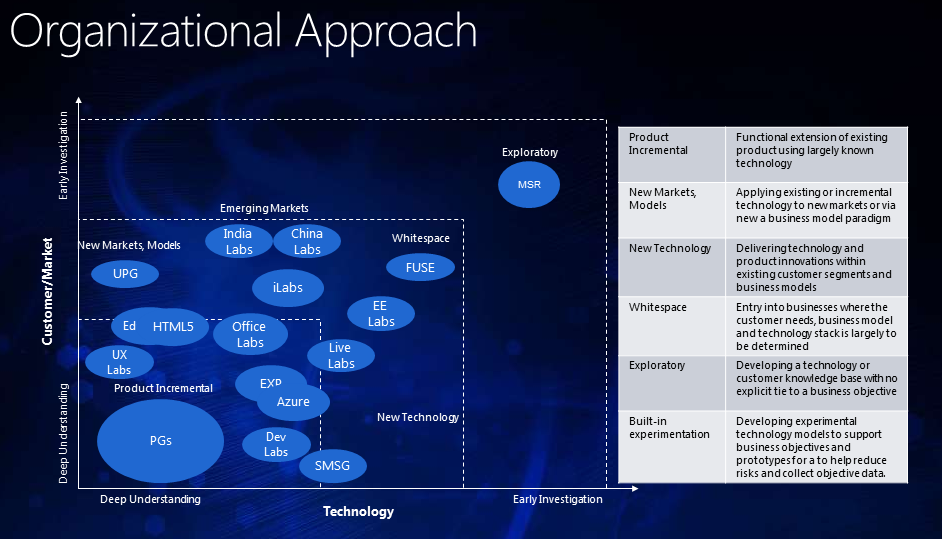How Microsoft thinks about innovation these days (in five slides)

Microsoft has done a lot of rethinking and revising in the past couple of years as to how to bring innovations more quickly to market. But it wasn't until a keynote presentation today that I understood how the Softies have been rejiggering the pieces to get concepts more quickly to market.
Dean Halstead, the Visualization Architect for U.S. Federal Microsoft, was the opening speaker at the SharePoint Saturday The Conference event I'm attending on August 11 in Annandale, Virg. Halstead, a 12-year Microsoft veteran, is considered an internal Microsoft Federal expert on innovative solutions, open government and government transparency.
Microsoft was in need of fixing its innovation processes and organization to help it become more agile. As an example, Halstead cited the Microsoft Surface. Although version 1 of the Surface never came to market until 2007, the Surface prototype dated back to 2003 or 2004. What took so long?
The Surface went through a formalized process,as opposed to idea of a product group working from the get-go with Microsoft Researchers. With Surface, "research was trying to shuttle that prod all the way through" to production. Lesson learned, Halstead said. Now, research projects at Microsoft often have product group involvement from early on, as was the case with the Kinect sensor, he noted.
Halstead showed off during his talk several slides that explained Microsoft's latest thinking on bringing internal innovations more quickly to market. Here were the five I found especially useful.
(click on slide above to enlarge)
Microsoft is thinking not just technologically, but also organizationally, about its innovation process these days. The various labs throughout the company are the conduit between Microsoft Research and the PGs (product groups).
(click on slide above to enlarge)
Products/technologies in Microsoft Research are anywhere from five to 10 years from commercialization (if they are deemed as having commercial possibility). Once a technology hits one of the Microsoft Labs, it is about two to four years from commercialization, Halstead explained.
This slide above was the first official mention I've seen of something I heard about back in 2009. Alchemie Labs (which I thought was spelled "Alchemy Labs") is an organization/group within Microsoft dedicated to creating teams and projects that function as internal startups. Idea Hub -- which is tied to Microsoft's internal Poll performance-management system -- is also something that Microsoft is making available to partners for customizing SharePoint, he said. The Garage -- an internal lab about which Microsoft Storyteller Steve Clayton blogged earlier this year -- is another of the company's mechanisms for helping employees turn ideas into potential products.
I had heard recently that Microsoft had done away with its revised ThinkWeek process, but I see it's still on Halstead's slide. (However, he also still had Microsoft Live Labs in his slide deck, despite the fact that Microsoft did away with that Lab earlier this year.)
Halstead mentioned an internal Microsoft offering known as "Acing," which is built on top of SharePoint. Acing allows Microsoft employees to use social-networking technologies similar to Twitter and Facebook inside the company only, so that Softies can find subject matter experts and share information without it being exposed to the public cloud, he explained.
(click on the slide above to enlarge)
My takeaway from Halstead's presentation: Microsoft officials believe they can use technology and process improvements to make innovation happen more rapidly and repeatedly. Do you think the Redmondians are right about this?
